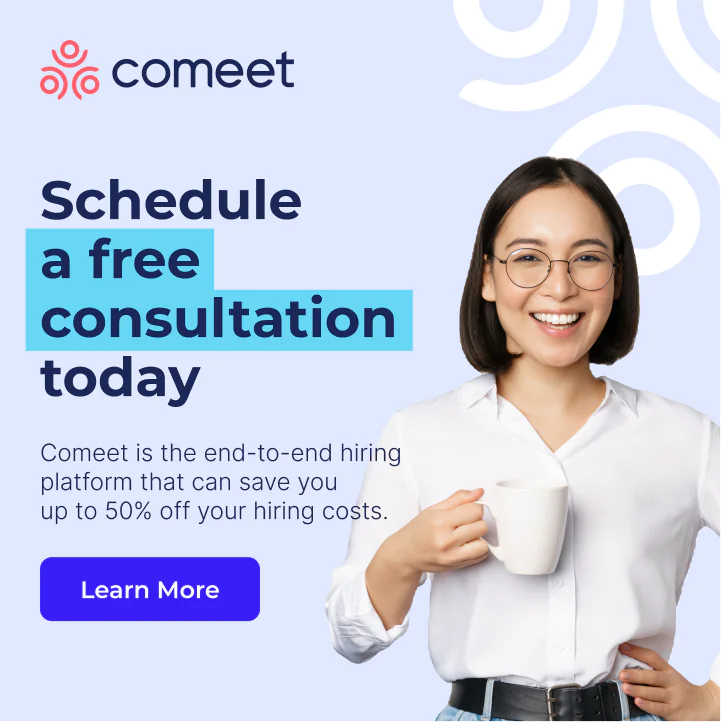While some people may think that the hiring stage signals the end of a successful recruiting plan, there’s actually one final step in full life cycle recruiting, and it’s called onboarding. Onboarding may come after you’ve actually hired the candidate, but it’s an essential part of the recruitment process.
Onboarding is the stage where you fulfill many of the promises you’ve made during the hiring process. It’s also where you showcase your organization as one the employee will want to work with for a lengthy period of time, so creating an amazing employee experience is a critical part of a successful onboarding program.
But what else is involved in the onboarding stage of full life cycle recruiting? In this post, we’ll talk about how you can onboard your candidates in a way that sets them up for long-term success at your organization.
What is full cycle recruiting?
Before we dive into the onboarding stage of the process, let’s take a quick look at the stages of full life cycle recruiting. Full life cycle recruiting is a holistic solution that can empower small to medium-sized businesses to hire quality talent without large recruitment teams. It can also make large recruiting teams lean and efficient.
Full cycle recruiting channels an organization’s recruiting capabilities into a process. It allows a single recruiter to facilitate the entire apply-to-hire recruiting cycle.
While different organizations adapt the full cycle recruiting process to their unique needs, it takes place in six general recruiting process steps:
- Preparing: The full cycle recruiter works with the hiring manager to define the needs for the position. This process includes highlighting the problems the organization wants to address, the qualifications of an ideal applicant, and the job duties.
- Sourcing: The recruiter uses the job description and qualifications to create a list of candidates from a pool of applicants using job boards, social media, and other tools. Internal and passive candidates with the right qualifications can also be encouraged to apply.
- Screening: The recruiter reviews candidate resumes and applications from the sourcing step to eliminate unqualified candidates and offers a phone screen to assess candidates that make the cut.
- Selecting: Selecting is the critical stage after the initial screening, and it’s typically a collaborative effort between the full cycle recruiter and hiring manager. While the specifics will vary across different organizations, the selecting phase typically includes post-first-round interviews, additional evaluations, and scorecards.
- Hiring: The recruiter sends a job offer to the preferred candidate, and finalizes background and reference checks, pay negotiations, and start dates.
- Onboarding: The recruiter or HR team will take the final step in the full cycle recruitment process. They arrange for the employee to arrive and meet with a point-of-contact to ensure the organization makes a good impression to keep the new hire long-term.
What is onboarding?
Onboarding occurs after you’ve hired a candidate. They’ve moved out of your recruiting pipeline and will become an employee at your company. It’s the practice of preparing the candidate to join your organization once they’ve accepted your company’s offer letter. And it’s about giving them the information, resources, and tools they need to do their job.
According to Indeed, onboarding involves the following:
- Introducing your new team member to the rest of the team they’ll be working with
- Welcoming them to the organization
- Teaching them about the company (its mission, goals, and values)
- Positioning your company as an organization the employee will want to work with for a long time
The onboarding process is a culmination of the recruiting cycle. It’s where you transition the individual from being a candidate to an employee. The length of the onboarding process varies based on the complexity and nature of the work you do, and the employee will likely need to complete training for their position, featuring internal company policies and valuable context to understand the responsibilities of the position.
Often during the onboarding phase, employees will read and sign the employee handbook. This action lets the company know the employee is aware of company policies they’ll need to abide by. The onboarding stage is also where your employee receives their equipment, software licenses, and any other tools or resources they’ll need for the role.
Keys to successful onboarding
Below are just a few key elements of a successful onboarding process:
Train new team members
You may have hired your candidate because they possess a specific technical skill set. Or maybe you hired someone who possesses the right temperament, attitude, and skill set who can grow into a role they may not be quite qualified for yet. In that case, you may want to give the individual additional training for their position.
Trainings such as reviewing the employee handbook, sexual harassment awareness, ethics and compliance training, and security practices and procedures will also help new team members understand your company and expectations from the outset of their employment.
Mentor new hires
Moving through the onboarding process can seem daunting, especially to someone who has never worked for a company before. That’s why you’ll want to pair the person up with a mentor they can contact with any questions or concerns they might have.
You’ll want to guide your new employees to HR or to their supervisor for any company or job-specific questions. But having a mentor, someone who’s been with the company for a while and understands the culture, can give them another outlet. It’s an informal connection to ask more pointed questions.
Mentors can schedule regular syncs with the new employee, helping them as they start their employment journey. They can be either hands-on or hands-off, depending on what the position requires.
Get new hires the tools they need to succeed
Does your employee have the hardware they need, like a laptop or phone? Do their devices have the necessary applications installed on them? Will they need any special licenses for apps their team needs to do their jobs?
Answering these questions, and assisting new team members with navigating these challenges, can be the difference between a successful onboarding experience and one that leaves the employee scrambling and confused. Know all the systems the individual needs to stay connected and get them set up as quickly as possible.
Onboarding concludes a successful recruitment process
Great onboarding should feel effortless for your new team members. It should serve as the end stage for an easy recruiting process that makes candidates feel valued and supported as they begin the next stage of their career with you. It provides them with the information and tools they need to perform the roles you hired them for.
What makes executing the onboarding process much easier is teaming with a partner who understands how full life cycle recruiting works and how to complete each stage successfully. With Comeet’s full range of recruiting services, we’re that partner.
Comeet’s platform equips you with the tools and information you’ll need to hire amazing people. The Comeet platform moves your entire hiring process into one easy-to-use location, enabling collaboration between recruiters, HR, and your hiring managers throughout the recruiting process.
At Comeet, we offer a full cycle recruiting solution through our Elastic Recruiting program. For more on how Comeet can help you cultivate your recruiting pipeline, contact us today.





























